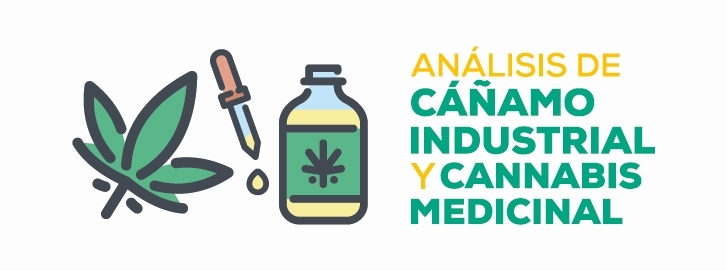Lines of technological specialisation have grown out of the study of technological capacities of the Centre, the research needs of CTAEX partners, and out of the study of national and regional agri-food technological offer.
Research activity in the National Agri-Food Technological Centre Extremadura (Centro Tecnológico Nacional Agroalimentario “Extremadura” - CTAEX) is focused in agricultural products valuation through its industrial processing, by diversifying the product range into national and international markets by means of the development of new processes and products, by valuing the by-products obtained in their processing, with principles of energy and environment sustainability, supported by processes digitalisation.
Specific technological axes
The research activity of CTAEX, whose findings are transferred by its OTRI, is focused on two specific technological axes: agricultural research and food research, which include those research lines defined as strategic, led by three technological axes: sustainability, food diversification, and information and communication technologies. And priority sub-sectors have been established to respond to groups with a significant importance in Iberian southwest, both based on their strategic activity and on their future possibilities.
AGRICULTURAL RESEARCH Evolution into a resilient, sustainable, competitive, and digital agriculture
The Common Agricultural Policy, conditioned by the farm-to-fork strategy, is driving European Union food system into a healthier and more sustainable food system. It has to be reconciled with the need of making crops profitable in spite of the massive presence of products from third countries, which is determining the present situation of the agricultural sector, and its need of continuous updating by trying to find more sustainable production methods, and of formular to reduce costs and increase productivity.
To be able to achieve the wanted profit, while reconciling it with the wanted sustainability, digital tools must be incorporated. They are the best guarantee for reducing agricultural inputs. Likewise, advanced biotech processes are needed to introduce crops and varieties adapted to soil and climate conditions, and to pests and diseases.
FOOD RESEARCH Innovation in present and future foods
Changes in the family structure and in food habits, the massive access to information, the pursuit of enjoying free time and leisure, the speed of present way of life, health awareness, safety, and the enhancement of our quality of life are determining the present needs that the agri-food industry must face.
Traceability, safety, aesthetics, diversity, and standardisation are aspects contributing to a comprehensive improvement of present and future products. These are today’s challenges that require specialised and updated knowledge.
Agri-food industry is the first economic sector in Spain that must adapt to a new game-changing generation of consumers, who are demanding new consuming trends, like extending products shelf life, reducing their price, offering a wider diversity or a more sustainable packaging. Moreover, in order to diversify the sector and to contribute to its reconversion, attention must be paid to consumers, who are more and more interested in the so-called “super-foods”, those which offer new sources of nutrients, and which are finding an important niche in a market which offers products increasingly more natural, less processed, and with fewer additives.
Cross-cutting technological axes
The sustainability of agricultural exploitations and of the food industry is one of the cross-cutting vector in agri-food sector. Agriculture and food industry decarbonisation is one of the core demands of the sector, so it is necessary to use renewable energies, and exploiting agricultural and food by-products.
Since the establishment of the Centre, the diversification of the agri-food sector has always been present in its research: aromatic and medicinal plants, introduction of horticultural species, hemp, stevia, energy crops, etc. Additionally, the agri-food industry need to increase its profitability by using the factories longer. For thar, more processable products must be introduced.
Popularisation of information and communication technologies in the agricultural system, and digitalisation of agri-food industry, Industry 4.0, are certainly going to revolutionise the sector in the near future. Precision agriculture is the best way of minimising the environmental impact of agriculture, since it uses just as much phytosanitary product, fertiliser and water as strictly necessary and just at the right time.
Strategic Research Lines
1. Production Cultural Techniques
Modern agriculture needs its production techniques optimised, therefore the main research lines in the Centre have been fertilisation, irrigation, or mechanisation, because it must reduce the use of nitrates and water, and it needs to adapt the machinery to more efficient crops or processes.
2. Crop Introduction and Adaptation
The drop in agricultural margins, and the ever-growing pressure of the climate change make it necessary to test new crops and varieties that can be profitable in today’s agriculture.
3. Alternative Agriculture (integrated and ecological)
Markets, increasingly demanding with the origin of foods, require products that are free of phytosanitary residues, or that have been processed with ecological agriculture techniques.
4. Biotechnology
The application of biological techniques in the value chain of agricultural systems will be the greatest technological revolution. The biorefineries, made possible by the application of sophisticated genetic edition tools will translate into the production of high value raw materials, as well as into the production of varieties adapted to our soil and climate conditions.
5. Food Processes
This working line is aimed at the development and enhancement of the food sector, to achieve more efficient, sustainable and digital processes.
6. Healthy Foods
Consumers are demanding to promote the healthy features of the foods, either by replacing their negative characteristics or by favouring the positive ones. This line meets the demands of today’s pace of life. Consumers increasingly demand functional foods that help sustain a healthy nutritional intake, and help increase performance in their everyday activities.
7. Food Products Development
This working line has been designed to develop food products, focusing on international markets orientation, by applying new food and cooking technologies, paying particular attention to cooked and precooked products.
8. Diversification and Conditioning of Traditional Foods
One of the main pillars of the Centre is seeking for processes that minimise the impact that preservation has in food, as well as formulas of energy savings, in order to achieve processing techniques with a lower thermal dependency, preservation processes with natural additives, and a longer shelf life. All trying to fulfil the safety and the diversity demanded by consumers on their tables as naturally as possible.
9. Containers and Packaging
The use of new materials is helping to extend shelf-life of the foods, which is vital to conquer farther markets, and to adapt foods to new eating habits.
10. Information and Communication Technologies
The use CIT’s and the digitalisation processes are the true vectors in achieving the development of agriculture and food industry. Carrying out demos of 4.0 processes is one of the Centre’s cornerstones, which it carries out via “farm food labs”.
11. New Technologies in Agriculture and Food
Applying emerging technologies in agriculture and food or process monitoring technology is one of the hallmarks of the Centre, with the aim of providing demos in real search conditions not yet transferred to the agricultural sector.
12. Bioenergy
In order to achieve the decarbonisation of the agri-food sector, its by-products must be utilised to generate energy, by applying new technologies, which have not always proved stable on this field.
13. Biomaterials
Using agri-food by-products to produce materials is one of the Centre’s working line. These materials can be used as containers, for building, etc.
14. Waste and By-Product Valuation
The aim of this line is exploiting its added value with a dual mission: reducing the polluting effect in soil, water and air, and transforming wastes in resources (energy, additives, biofuel, inputs, etc.).
15. Technology Transfer
One of the essential strategy features of the Centre is the dissemination of research findings, to achieve the objective of transferring the technology originated from the projects.
 Español
Español
 English
English







